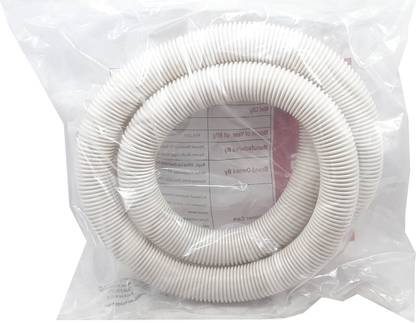There are numerous reasons to buy a new washing machine or replace an older model. It will allow you to get your clothes cleaned more efficiently and clean them better. Also, it will cut down on your laundry cycle time. That means you don’t need to spend all of your time searching for items while still being able to remember important things at home, such as the kids’ sporting events. The TV commercials that are shown go farther by suggesting that certain brands make people happier when they do their laundry however this will depend heavily on the preferences of each user as well as which features certain models provide however, the fact is that these machines work best when used correctly.
Connections to Washing Machine Drain Hoses
There are two options to connect your washing machine drain line. For wastewater disposal there are two options: one is to install a dedicated vertical pipe. The other is to suspend it over an open sink.
1. Slop Sink Connection
There are various ways to drain your washing machine but the sink with slop is one of the ones you should consider. This arrangement poses numerous risks and potential problems. Water could back up into the washer’s filter from air gaps between the hoses. Any force that is applied by the spin may also harm any equipment.

2. Drainpipes that are Dedicated Pipe
An additional connection could be a better choice for your drain line for your washing machine. These pipes are generally larger than most kitchen sink drains and can handle the amount of water typically drained from them without getting clogged or loosened as they would if you connected them directly underneath the spot where we wash our dishes! They can also be found at higher altitudes. This is because there is less risk when making use of these pipes instead of joining them into a single indoor line that runs through an opening (or door).
3. Washing Machine Drain Maintenance of the Hose
While hose connections may seem to be a bit confusing and messy, once you have it properly set up your house will last longer. It is crucial to keep the hose’s cleanliness and attach it with ease. If necessary, add filters to both drain pipes. They can be constructed out of old socks or hoses and allow lint to be prevented from getting stuck inside. It can also stop obstructions caused by the low pressure of water.
Common Materials for a Machine Drain Hose. Machine Drain Hose
1. Stainless Steel Braided Drain Line
The material isn’t as flexible or rigid when it’s called stainless-steel. It’s wrapped in plastic and a coated mesh. This material is able to stand up to cuts and twists and also burst more easily than other product available. Some companies will declare their products as ‘burst-free’ to demonstrate how much attention was given to this aspect.
2. Rubber Drain Hose
The rubber hose can be an economical alternative to plastic and metal hoses. It’s been in use for a long time, but and the latest models feature braided polyester mesh or rayon to increase strength. However you’ll need a hose that is marked as reinforced since it’s under some rough usage. They’re already manufactured as they were originally designed, therefore there is no need to create any fabrications.
For more information, click flexible drain pipe for sink
